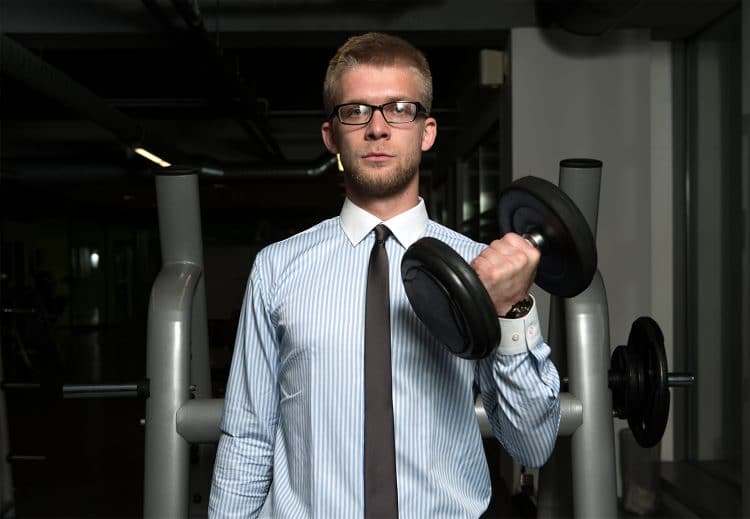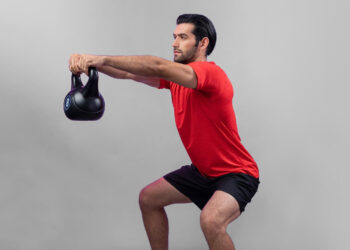How many calories do you burn Sitting?
The average person (180 pounds) will burn 86-129 calories per hour sitting. The number of calories you burn sitting depends on how you sit and what you are doing while sitting.
Calories burned with Daily Activities (weight: 175 lbs)
| MET | 15 mins. | 30 mins. | 45 mins. | 60 mins. | |
|---|---|---|---|---|---|
| Mowing the Lawn | 6 | 125 | 250 | 375 | 500 |
| Stairs | 8.8 | 183 | 367 | 550 | 733 |
| Standing | 2.5 | 52 | 104 | 156 | 208 |
| Gardening | 5 | 104 | 208 | 313 | 417 |
| Sleeping | 1.3 | 27 | 54 | 81 | 108 |
| Sitting | 1.3 | 27 | 54 | 81 | 108 |
| Raking | 4 | 83 | 167 | 250 | 333 |
| Resting | 1.3 | 27 | 54 | 81 | 108 |
| Walking a Dog | 3 | 63 | 125 | 188 | 250 |
How To Use the Calculator
To use this calculator to calculate the calories burned sitting, you must input how long you spent sitting and how much you weigh. After that, you choose the specific sitting activity you spent time doing and you will find the calories you would burn there. This is how you do that step-by-step.
Using the calculator step-by-step:
- Choose the measuring unit – metric (kilograms) or imperial (pounds)
- Enter your weight
- Select the sitting activity you spent time doing
- Enter the time you spent sitting in minutes
- Hit CALCULATE
You should now see the approximate calories burned while sitting.
MET (Metabolic Equivalent of Task)
MET values are numbers that rate how many calories are burned doing various tasks. These values are used in the MET formula, which calculates how many calories are burned.
MET values (metabolic equivalent values) are the ratio between your active metabolic rate (AMR) to your resting metabolic rate (RMR).
Level Up Your Fitness: Join our 💪 strong community in Fitness Volt Newsletter. Get daily inspiration, expert-backed workouts, nutrition tips, the latest in strength sports, and the support you need to reach your goals. Subscribe for free!
Your active metabolic rate is equal to the calories burned while you are active throughout the day in addition to your resting metabolic rate. Your resting metabolic rate is the calories burned while you are at rest, without actively digesting.
Your basal metabolic rate is the same thing as your resting metabolic rate. They both measure the calories burned at rest.
The higher the MET value of an activity, the more calories are burned doing it. A task or physical activity with a MET of 1 will burn as many calories as your resting metabolic rate or basal metabolic rate. A task or physical activity with a MET of 4 will burn 4 times more calories than a task with a MET of 1.
So, a task with a MET of 4 will also burn 4 times as many calories as your RMR.
In addition to your MET, the formula uses how much oxygen your muscles use per kilogram of body weight per minute. Your muscles use 3.5 ml of oxygen.
You can calculate this amount by multiplying 3.5 by your bodyweight in kilograms. This is done in the equation along with your bodyweight and the MET of the activity to give you the approximate calories burned doing an activity.
Formula
Total Calories burned in 1 minute = (3.5 x MET x body weight in kg) / 200
Examples
A person weighing 140-pounds will burn 87 calories per hour sitting.
- Calories burned (per minute) = (body weight in kg x MET x 3.5) / 200
The equation to calculate the number of calories a 140-pound person will burn sitting will look like this.
-
(63.5029kg x 1.3 x 3.5) / 200 = 1.444690975 Calories burned per minute
To find how many calories are burned per hour sitting in general for someone that is 140-pounds, you must multiply the calories burned per minute by 60 minutes.
- Calories per hour burned = 1.444690975 x 60 = 87
Results
87 calories are burned by a 140-pound person per hour sitting, and 1.5 calories are burned each minute sitting in general.
How many calories do we burn just sitting for 1 hour (weight: 150lbs)
| Activity Name | Met | Calories Burned |
|---|---|---|
| Meditating | 1 | 86 Cal |
| Reclining reading | 1.3 | 111 Cal |
| Reclining talking on the phone | 1.3 | 111 Cal |
| Reclining writing | 1.3 | 111 Cal |
| Sitting at desk, resting head in hands | 1.3 | 111 Cal |
| Sitting quietly and watching television | 1.3 | 111 Cal |
| Sitting quietly, fidgeting, fidgeting hands | 1.3 | 111 Cal |
| Sitting quietly general | 1.3 | 111 Cal |
| Sitting fidgeting feet | 1.8 | 154 Cal |
| Sitting listening to music (not talking or reading) | 1.5 | 129 Cal |
| Sitting smoking | 1.3 | 111 Cal |
| Watching a movie in a theatre | 1.5 | 129 Cal |
What is Sitting?
Level Up Your Fitness: Join our 💪 strong community in Fitness Volt Newsletter. Get daily inspiration, expert-backed workouts, nutrition tips, the latest in strength sports, and the support you need to reach your goals. Subscribe for free!
Sitting is resting the body using a chair, the floor, or anything that can hold your body weight. Sitting is something that does not burn many calories, so it does not count as exercise, and it also is not healthy.
Sitting is very unhealthy and should be minimized as much as possible. Our bodies not only work more efficiently standing upright but many functions rely on uprightness to work efficiently, such as bowel function.
Sitting for extended periods of time can weaken many muscles such as the legs and glutes, and the hips and back. This atrophy will cause problems that are irreversible in the long term because of the injury and health risks that will arise because of them.
There are no health benefits to sitting and it should be avoided whenever possible.
How to Combat The Negatives of Sitting
Sitting can be negated by first limiting the time you spend sitting. This is not easy but can be done with habit and taking frequent breaks and walking every 30 minutes to stay active the time you do not spend sitting.
Once you limit sitting, you can increase your activity outside of sitting, especially with resistance training. You can spend 10 minutes walking a day to offset the negative effects of a full day of sitting.
The general rule is that you should get 150 minutes (about 2 and a half hours) of exercise a week, as recommended by the CDC (Center of Disease Control) to reduce the risk of medical conditions and to decrease the effects of sitting all day.
Any physical activities are good for the effects of sitting. Physical activities done at a moderate pace to even doing intense activity will be more beneficial than easy exercise done at a slow pace without much intensity.
This is because more intense activity burns more calories, which is more beneficial to your health because most of the health conditions in our modern day are caused by or are more prone to obesity. When you are obese, you are more at risk for dozens more diseases than if you were not obese.
Spending eight hours a day sitting is terribly bad for you, but awareness of your unhealthy habits while doing things such as watching television or playing video games, and lounging, can help turn around your unhealthy habits for lifelong healthy habits.
It is entirely impossible to stop sitting, even less than eight hours daily because we sit all the time and everywhere we go in this day and age. People have either a desk job or simply use a desk anywhere they go. A desk is not good for you for extended periods because of the reasons I listed above.
A desk is even worse because of its use. It is used daily, and can’t be sacrificed because of its use… or can it?
Standing Desks
A standing desk is a desk that holds things like a computer and its monitor but in a position allowing you to stand and adjust things while standing. This is a whole lot healthier than sitting and can even reverse health effects like back and neck pain or gastrointestinal issues.
If you work a job that requires the use of a desk, then getting a standing desk can transform your health. You will burn more calories, increase your activity level, and save your knees and strengthen them compared to sitting. Sitting weakens the knees and creates instability over time.
Sitting and standing both have their function but sitting time should be reduced as much as possible because of the negative effects it has on your health. Getting a standing desk will have a significant difference to your health than without.
Variants of standing desks can help you lose weight and burn many more calories while standing. A treadmill desk can help keep you active while also having the benefits of a desk. It is a desk combined with a treadmill, so you walk in place while getting your work done. This can increase your standing calories and lets you do cardio while working.
Conclusion
The calories burned sitting vs standing are not a significant difference but is noticeable. The calories you burn standing are 50-60 more calories on average standing. Burning calories is as easy as that, but if you can increase your energy expenditure by standing rather than sitting, then this will lower the increased risk of many diseases you will get if you sit for prolonged amounts of time.
The average person will burn 90-150 calories per minute. You can track your calorie burn sitting by using this calculator. This can help you stay accountable for your energy expenditure and will help you lose weight and get in better shape.
References:
- The dangers of sitting: https://www.betterhealth.vic.gov.au/health/healthyliving/the-dangers-of-sitting
- Jetté, M., Sidney, K., & Blümchen, G. (1990). Metabolic equivalents (METS) in exercise testing, exercise prescription, and evaluation of functional capacity. Clinical cardiology, 13(8), 555–565. https://doi.org/10.1002/clc.4960130809
- WHO global recommendations on physical activity for health (updated): https://www.who.int/teams/health-promotion/physical-activity/developing-guidelines-on-physical-activity-and-sedentary-behaviour
- Compendium of physical activities: https://sites.google.com/site/compendiumofphysicalactivities/



















